Better Posture for Better Sleep
Disclosure: By clicking on the product links in this article, Mattress Nerd may receive a commission fee at no cost to you, the reader. Read full disclosure statement.
Aside from a few tosses and turns, our bodies remain in the same posture for a long time when we sleep. If the neck is strained, the back bent out of alignment, the arm splayed in an awkward angle, or the shoulder is boring too hard into the mattress, you may wake with a crick in your neck, a nagging backache, or a creepy pins-and-needles sensation in your limb.
Good posture while sitting or standing is an important element of good health. It ensures your bones align with the rest of your body, while also balancing the tension in your muscles and ligaments, and minimizing stress. Maintaining that good posture while you lie down to sleep is just as important.
But how can you get in the habit of sleeping in good posture when slouching to sleep, at least temporarily, feels so right? The good news is that adjusting your sleep posture to a more ergonomic position isn’t difficult once you put some techniques into practice.
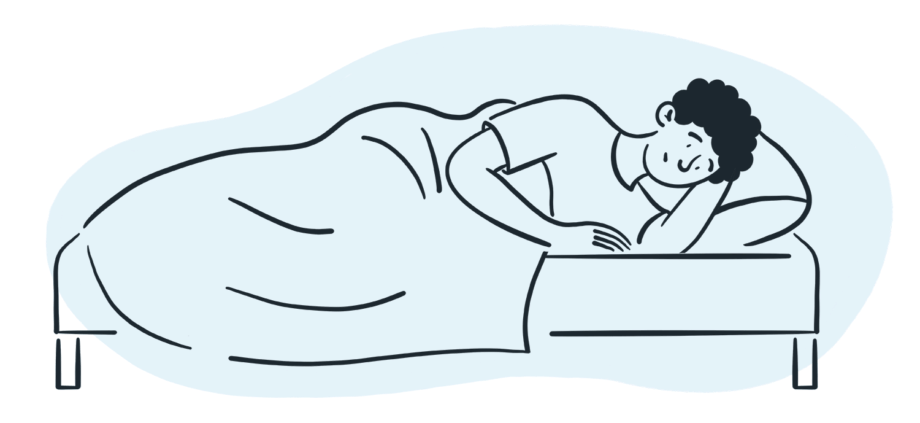
How Posture & Sleep Are Connected
A good night’s sleep is vital to overall health and wellbeing. During deep sleep, blood flow to the muscles increases and tissue growth and repair occur. This enables us to wake feeling refreshed and renewed. But when your sleep position is out of whack, it can directly impact sleep quality.
According to a study published in the international journal Health, poor sleep posture can wake you during the night as you reposition to lessen pain and pressure. Fractured sleep can leave you feeling sleep deprived in the morning. And, it shouldn’t surprise you to know that when you’re suffering from inadequate sleep, you’re more sensitive to pain, which, in turn, can make it more difficult to fall asleep and stay asleep.
It turns out that posture and sleep are connected in other ways as well. According to research published in the journal Clinical Neurophysiology, a good upright posture while awake increases brain activity and improves sustained attention, and proved to help combat fatigue in study participants suffering from sleep deprivation.
Sleep Positions for Better Alignment
To achieve good sleep posture, strive to keep the spine in as neutral a position as possible, from your head down to your hips. According to Coastal Orthopedics, a Texas Gulf Coast orthopedic center, to achieve good posture, the chin should be up and not tucked, shoulders low and not hunched, back straight and not arched, knees relaxed with a slight bend and hips aligned with the shoulders. Here’s a closer look at how different sleep positions impact the goals of good sleep posture.
Back sleepers: Lying flat on your back is about as close as you can come to achieving a relaxed posture with your head, neck and spine in alignment. However, this position can cause or worsen snoring and isn’t ideal for people who suffer from acid reflux.
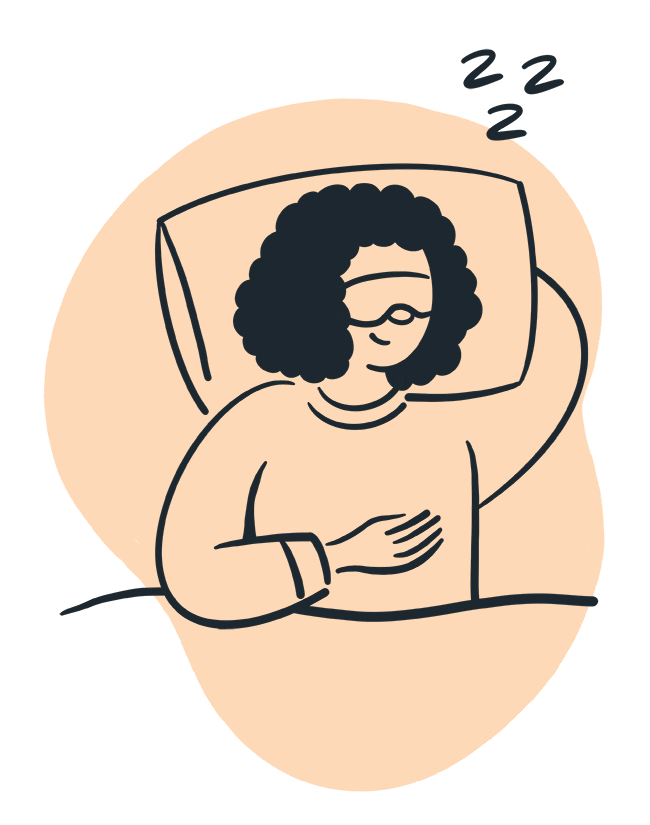
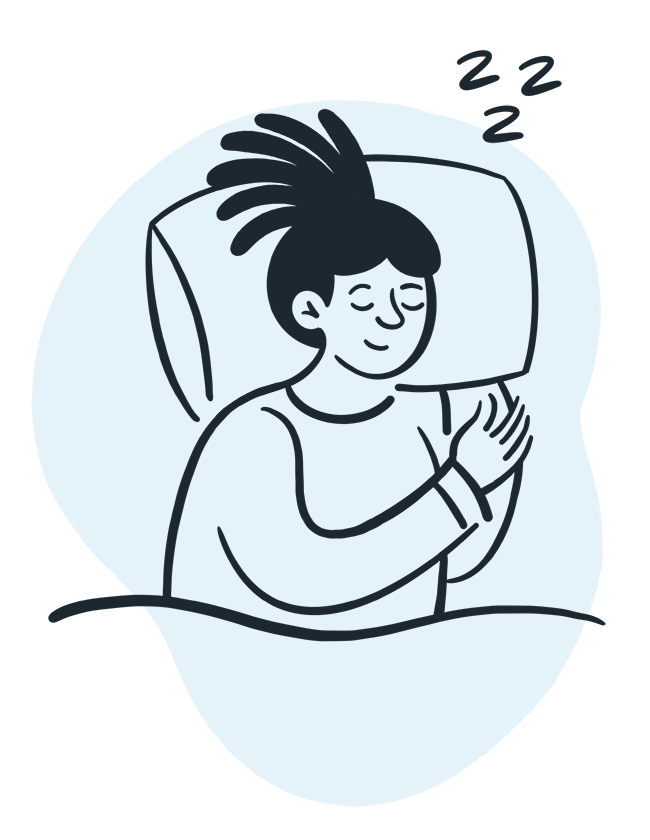
Side sleepers: Most people find sleeping on their side to be most comfortable, at least initially. Elongate the legs to keep a neutral spine and use a pillow with enough loft to keep the neck even with the spine.
Stomach sleepers: Stomach sleepers are forced to turn their heads to the side, which can strain the neck. Stomach sleeping also causes the back to overarch. If you’re a stomach sleeper, go pillowless or use a flat pillow to lessen back and neck strain and tuck a pillow under your abdomen to prevent the lower back pain.
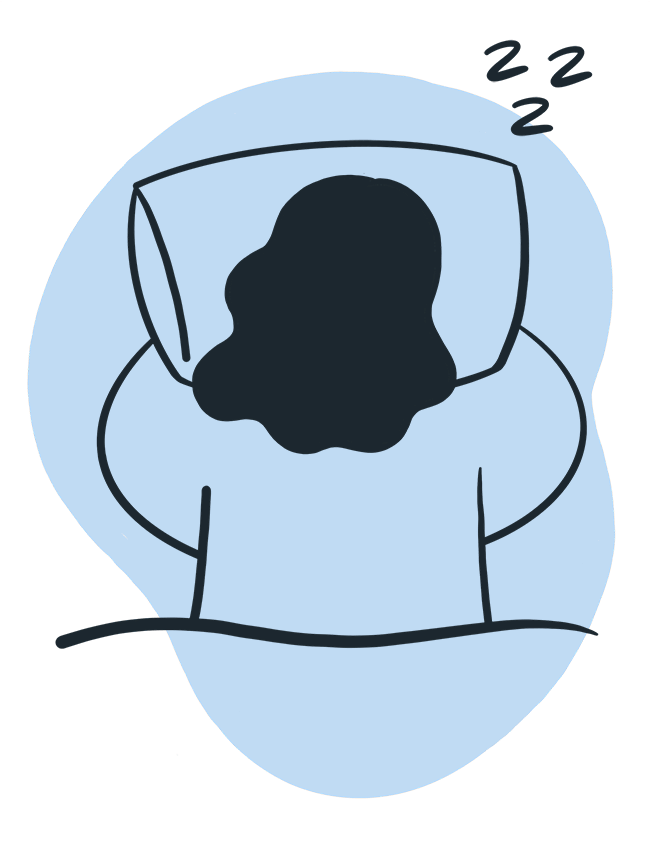
Combination sleepers: While most people toss and turn a little when they sleep, they tend to settle into one of the basic sleeping positions. Combination sleepers, however, spend most of the night adjusting their bodies.
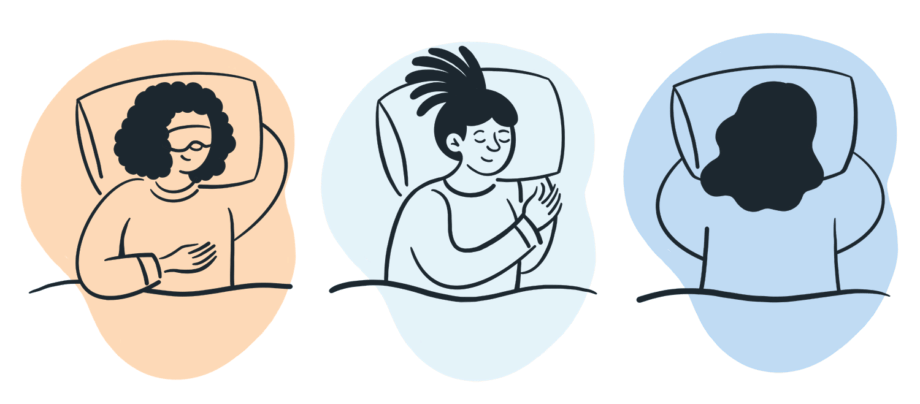
Sleep Positions to Avoid
Stomach sleepers: Any chiropractor will tell you that sleeping on your stomach is a bad idea because of the strain it puts on your neck, shoulders, and upper and lower back. It also puts excess pressure on the knee joints and holds the feet at an awkward angle. While pillows can help reduce the strain, stomach sleeping is just not a good sleep posture and should be avoided if possible.
Fetal position sleepers: Side sleeping is the second-favored sleep position behind back sleeping, but not if you ball your legs up close to your chest in a tight fetal position. Doing so can cause tightness and soreness in the muscles, ligaments and tendons, especially in older adults. It can also be rough on the knees, hips and back.
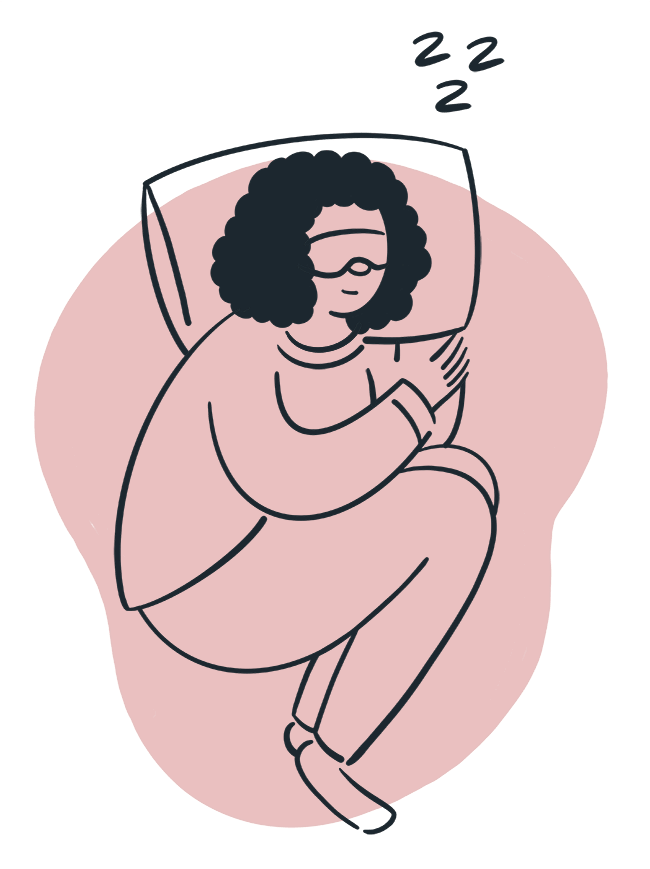
Why Body Alignment Matters
Maintaining good posture is important whether you are standing or sitting, and especially when you are lying down to sleep. Bad sleep posture knocks your spine out of alignment which can lead to back pain (usually lower back pain) and neck pain. It can also put too much pressure on your hips or shoulders, block blood flow (and cause a limb to “fall asleep”), or trigger leg cramps.
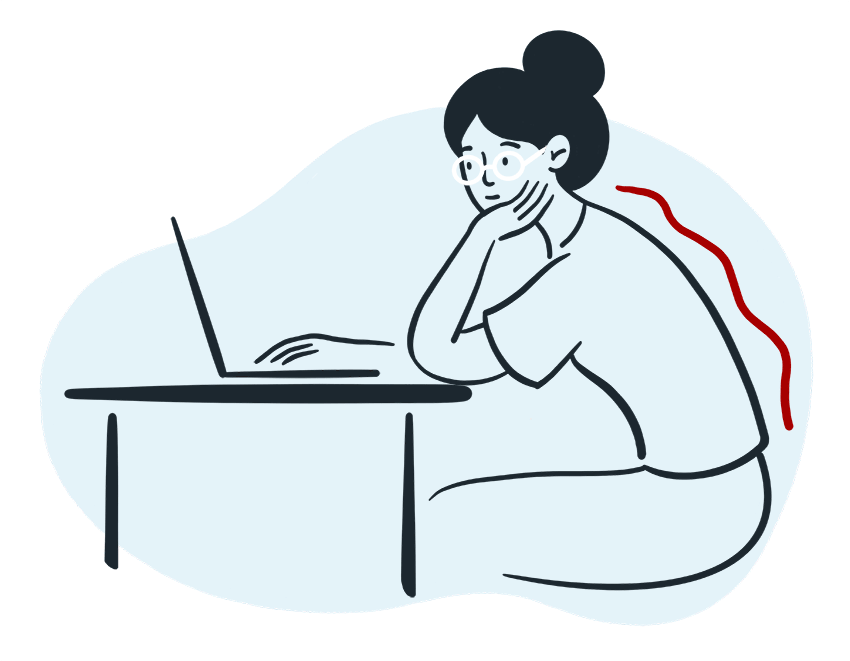
Tips For Maintaining Proper Alignment & Posture
- The power of pillows for back sleepers: Sleeping on your back is the preferred sleeping position, but if you have a more pronounced back arch, try placing a small lumbar pillow or yoga bolster under your knees. This takes some of the strain and tension off the lower back. Also be sure your head pillow isn’t so thick that your neck is forced to bend. Your chin should rest at a right angle to your neck to maintain normal cervical curvature.
- The power of pillows for side sleepers: If you prefer to sleep on your side, pillows can help you position your body so that your spine stays aligned. First be sure your head pillow has enough loft and support to keep your head held high enough so that your spine stays aligned. Sliding a pillow between your knees can also help straighten your spine toward the lower back.
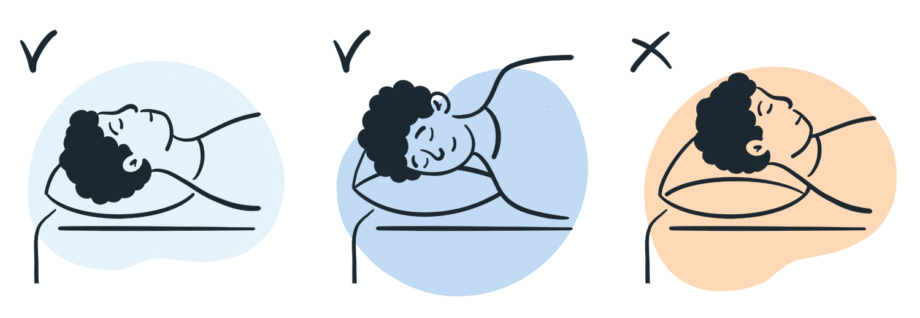
- Invest in a new mattress: A good mattress can do wonders for helping with sleep posture. A memory foam or latex mattress, or a hybrid that combines innerspring with extra foam, can help keep the spine in alignment. These mattresses can also provide enough cushioning at sensitive pressure points at the shoulders and hips to reduce pain from pressure.
- Make room to spread out: It’s sweet to cuddle up to your loved one or favorite pet. But when it comes to sleep, you should have plenty of room to spread out. Be sure your bed is large enough to accommodate both of you comfortably, and consider a mattress with motion transfer—a quality that isolates motion so that you aren’t disturbed when your bed partner repositions during the night.
- Use gentle reminders: If you’re having a hard time maintaining good posture in bed because you inadvertently roll over in your sleep, consider getting a sleep positioner belt or wedge pillow. These specialized products provide gentle resistance to keep you in position while you sleep.
Movements to Avoid
- Twisting when turning over: Instead, bend your knees and move your entire body as a single unit.
- Balling up too tight in fetal position: Doing so can cause tightness and soreness in the muscles, ligaments and tendons, and wreak havoc on the knees, hips and back. Instead, stretch out your legs a bit.
- Bending the body when you get out of bed: For back pain sufferers in particular, bending at the hips to swing your legs out of bed can aggravate your symptoms. Try rolling onto your side first and bending your knees up. Then using your arms, push the body up until you are in a sitting position on the edge of the bed.
- Quick, jerking movements: A sudden jerk of the head can throw out your back or leave you with a crick in the neck. Instead, focus on slow, graceful movements.
Stretches For Better Posture
Stretching can help undo neck and back pain and stiffness caused by slouching during the day and make you more aware of your posture.
- Shoulder rolls: Sit or stand in a straight but comfortable position. Lift your shoulders up toward your ears, then roll them backwards, pulling the shoulder blades together. Release then repeat.
- Chest release: Sit or stand up straight with your arms straight out to your sides with your palms facing forward. Keeping your arms straight, gently push them backward while squeezing your shoulder blades together.
- Standing forward bend: Stand with your feet a little more than shoulder-width apart. Reach your arms behind you and grasp your hands together. Lean forward at the hips and bow toward the floor while pushing your arms up toward the ceiling. Remember not to push so far that it hurts. Slowly return to standing position.
- Spine stretch: Sit on the floor with your back straight and your legs straight out in front of you. Point your toes pointed toward the ceiling. Reach out in front of you and lean forward, not touching your feet but holding your arms parallel to your legs. Repeat as needed.
Tips for Better Sleep
Changing your sleep position to one of better posture may take some getting used to, but you’ll quickly reap the benefits of less pain and better sleep quality. Consider trying these strategies to achieve a better sleep position.
Weigh your options
Sure, back sleeping is the best posture for sleeping. But if you snore or suffer from acid reflux, you may need to make some adjustments, such as using a wedge-shaped pillow to gently prop up the head and chest, or invest in an adjustable bed frame. Or consider side sleeping instead.
Rise to the occasion
Speaking of adjustable beds…not only can you raise the head of an adjustable bed to reduce snoring and acid reflux, you can instead raise the legs. This is especially helpful for back sleepers with a more pronounced back arch, which can become strained when the legs are stretched out straight.
Float in space
Another word on adjustable beds: By gently elevating the head and the legs at the same time, you can create a zero gravity position which mimics the weighless, pressure-free sensation of floating in space. This can also be achieved using pillows.
Stretch yourself
One of the best times to do those recommended stretches for good posture is just before bedtime. This helps relax muscles and relieve tension, which can help you fall asleep faster and more comfortably.
Exercise
A great way to improve your posture is to strengthen your core muscles in the abdomen and lower back. These muscles connect to your spine and pelvis and, when healthy and strong, help stabilize your pelvis and keep your spine in a neutral position. As an added bonus, several studies have shown that exercise can actually help you fall asleep faster and improve your overall sleep quality.
Final Thoughts
Poor posture is something that occurs over time, so gradually that we don’t realize we are slouching. The same can be said about poor sleeping posture. We often don’t realize we are in an awkward sleeping position until we awaken with a tingling arm, nagging backache or a crick in the neck. Adopting a good sleep posture reduces aches and pains and improves overall sleep quality. Once you know the best positions and products to help you achieve them, such as pillows or adjustable beds, it’s not difficult to adjust your sleep posture. The payoff of good sleep is well worth the effort.


